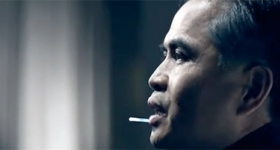by Viji Sundaram
Originally posted at New American Media.
ENCINO, Calif—On a recent day in this Los Angeles suburb, Maya Jagdeesh, 35, was being wheeled out of a room at the Fertility Institutes after undergoing an $18,000 procedure to ensure she gets a boy.
Jagdeesh (not her real name) had flown in from Vancouver, B.C., with her husband to Dr. Jeffrey Steinberg’s clinic after seeing his online ad that characterizes his pre-implantation genetic diagnosis (PGD) service as “the world’s largest and most successful 100 percent sex-selection program.”
Jagdeesh said that in her Indian community, most people would assume that her husband or in-laws had forced her to have the procedure. But she insisted she had sought out the clinic herself.
“I know in our culture it’s good to have a boy,” she said. With two “lovely daughters” ages 12 and 8, she felt having a son would “complete” her family.
“That’s the word I hear … from 98 percent of my patients,” Steinberg said. “They want to ‘complete’ their family.”
PGD is a combination of in vitro fertilization and genetic screening developed in the early 1990s to identify embryos with hereditary diseases. Now, however, many U.S. clinics are openly offering the procedure to choose a baby’s sex—helping women like Jagdeesh get around bans on sex-selection in Canada and most other countries.
Steinberg’s clinic is large, bright and cheerful, with two pairs of booties— one blue, one pink—prominently displayed. Receptionists at the front desk switch with ease from English to other languages. Bouquets line the walls—sent by his “satisfied” patients, says Steinberg, who describes his practice as “happy medicine.”
Not Always "Happy Medicine"
But not all the women who come to his fertility clinic or others in the U.S. that offer PGD are brought there by happy reasons. Especially for those with roots in Asia, Africa, and the Middle East, sex selection is often not freely chosen. Women are frequently coerced, overtly or subtly, to guarantee the prize their husbands desire above all else—a son.
Steinberg is aware of this pressure. He targets patients from those countries with newspaper and online ads, like the recent one in India-West, a national weekly published in San Leandro, Calif, that features a picture of a row of diaper-clad babies. “Have a Boy, Have a Girl Guaranteed,” the ad says.
Women of Indian and Chinese descent make up 30 percent of The Fertility Institute’s patients, he says.
Steinberg says he works with some 270 clinics worldwide, a number of them in India. They administer the hormone shots that stimulate egg production—a process that can take several weeks—and prepare the patients for PGD in the United States. Once the woman has arrived at his clinic, Steinberg performs surgery to collect her eggs, fertilizes them in the lab and analyzes the embryos. Only those of the desired sex are implanted in the mother’s uterus.
"A very hot issue"
Steinberg declined to identify the India clinics, saying he didn’t want to get them into trouble. “It’s a very hot issue there,” he said.
Indeed, Steinberg used to advertise on websites in India, until Google banned him from doing so. Sex-selection techniques and ads are outlawed in that country.
Many Indian-American publications, including the widely circulated India Abroad and Silicon Valley–based India Currents, also dropped Steinberg’s ad after protests from women’s rights groups. Sex-selection services stoke cultural biases that lead to discrimination against women, the protesters complained.
But Steinberg argues that he empowers women by letting them choose the sex of their child. Most of his Caucasian patients want girls, he noted. But he acknowledged, “From patients from India, China and the Middle East, the request is for boys.”
“We have women who come here with genes that could cause breast cancer and who don’t want to pass that on to their babies,” he said, but “for every woman I see regarding the breast cancer gene, I see 400 women who want to choose the sex of their child.”
Steinberg’s critics disagree there’s anything empowering about his clinic. “Just because his Caucasian patients want girls and not boys — he’s still encouraging gender discrimination,” insisted Sujatha Jesudasan, executive director of the Berkeley-based Generations Ahead. The nonprofit promotes policies on genetic technologies that protect human rights.
Jesudasan cited research showing that even in the U.S., “men are more likely to stay married to women who give them a son and also more likely to pay child support to sons.”
The U.S. is among only a handful of countries that allow sex-selection procedures — or, as clinics here prefer to call it, “family balancing.”
Of the more than 400 fertility clinics in the United States, nearly three-quarters offer PGD, according to a 2006 survey by the Genetics and Public Policy Center (GPCC), in Washington, D.C. And of those offering PGD, 42 percent do so for gender selection purposes, said Susannah Baruch, the group’s law and policy director.
Dr. Mark Hughes, a geneticist at Wayne State University in Detroit who helped pioneer the PGD technique, told ABC News that it could detect more than 400 gene-linked diseases. He said he was opposed to using PGD to select a child’s sex.
Gender Isn't a "Disease"
“I went into science and into medicine to diagnose and treat and hopefully cure disease, and the last time I checked, your gender wasn’t a disease,” he said.
The ethics committee of the American Society for Reproductive Medicine agrees that couples should be discouraged from selecting some embryos and discarding others solely because of a child’s sex.
“We have a very nuanced position,” said Eleanor Nicoll, a spokesperson for the group. “Family balancing is a very worthwhile goal, but it’s not advisable to do in vitro fertilization because it’s an invasive and complicated procedure.”
It is also a very lucrative procedure for the clinics that perform it. Besides his Encino flagship clinic, Steinberg has clinics in New York and Mexico. Despite the recession, “business hasn’t dipped,” he said proudly.
One reason is that the preference for male children in some cultures is deeply rooted. In many Asian cultures, a boy is viewed as a potential breadwinner who will support his parents in their old age and continue the family line.
A girl is viewed as a burden because parents must pay her groom’s family a dowry — in money or valuables — when she is married. As the Indian saying goes, “Bringing up a daughter is like watering a plant in your neighbor’s yard.”
“I get calls from men in India who say they run a major corporation and they can’t leave it to their daughters,” Steinberg said.
Even though the giving of dowry was banned in India in 1994, it is still practiced with impunity in virtually every part of the country. Dowry demands have financially ruined many families and even caused newly married women to die in kitchen “accidents.”
While the preference for sons often diminishes as immigrants assimilate in the United States, many others hold on to their cultural biases.
Biases in U.S. Families, Too
A 2008 analysis of Census data by two Columbia University economists found that among U.S. children born to Indian, Chinese and Korean parents, the ratio of boys to girls was skewed. For eldest children, the ratio was similar to the general population – 1.05 boys for every girl.
But when the first baby was a girl, the odds of the second being a boy rose to 1.17 to 1. And after the birth of two girls, the likelihood of the third being a son jumped to 1.51 to 1.
This is clear “evidence of sex selection, most likely at the prenatal stage,” the authors wrote.
So strong is the hunger for a male child in some communities in India, and so intense is the pressure on women to produce a son, that female infants are frequently murdered, sometimes by the frightened mothers themselves.
The deep-rooted cultural bias against daughters has noticeably skewed the female-to-male ratio in some states in India, particularly in Punjab, Himachal Pradesh, Rajasthan, Uttar Pradesh and Bihar, where an estimated 160,000 baby girls are reportedly killed every year. In 2001, males in India outnumbered females by about 35 million.
Part of the imbalance comes from abortions. Ultrasound results often lead to terminated pregnancies, which is why the Indian government banned the use of the technology to determine gender in 1994.
10 Million "Missing" Female Fetuses
Even so, sex-selective abortions have resulted in 10 million “missing” female fetuses over the past 20 years, according to a 2006 report in The Lancet.
Steinberg called the practice of female feticide and infanticide in India and elsewhere “sickening and horrendous.” But he denied that his clinic is perpetuating a cultural preference for boys. “You don’t inject your own morals into what you want to do,” he said, “else you can’t be a good physician.”
Still, support groups for South Asian victims of domestic violence talk of gender preference as being, in Jesudasan’s words, “part of the life cycle of violence against women.”
“I have talked to severely abused South Asian women in fertility clinics,” said Dr. Sunita Puri, a medical student at UC San Francisco who has been researching sex-selection among South Asians in and outside the United States for the last six years and has published many papers on it.
Steinberg said he has never heard one of his patients say she’s been abused, and if a woman indicated on his clinic’s intake sheet that she had been, “we would not take her in.” But from many of his patients with roots in South Asian, he admitted, “I hear the words ‘family pressure’ and ‘social pressure.’”
Steinberg generated more controversy last year when his website advertised that couples would be able to make “a pre-selected choice of gender, eye color, hair color and complexion.” In other words, they could have a designer baby.
Steinberg said he was responding to requests from couples, many of whom wanted “green-eyed babies.” He said he saw no problem with it.
But others do. “He’s opening the door to a world of genetic castes,” asserted Marcy Darnovsky, associate executive director of the Berkeley-based Center for Genetics and Society. “Even those people who want to have a girl will now want a certain kind of girl. What happens if that girl doesn’t live up to their expectations?”
Jesudasan concurred: “Our ultimate fear was that sex selection would become a gateway for eugenics.”
Steinberg has put those plans on hold. “I’m not a mad man,” he said. “I’m sensitive to feedback.”
Meanwhile, by the time Maya Jagdeesh has delivered her baby, she estimates she will have spent close to $35,000, including hormone shots at a clinic in Vancouver, air fare and hotel expenses for herself and her husband in Encino, and monitoring by Vancouver clinic until her child is born.
“It will certainly be an expensive baby,” she said.
This story was produced as a project for The California Endowment Health Journalism Fellowships, a program of USC’s Annenberg School for Communication and Journalism.









Comments